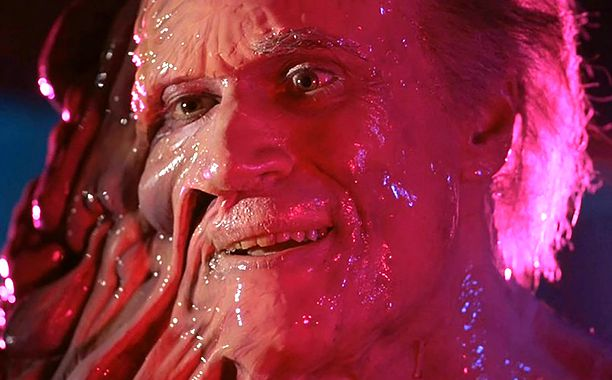With From Beyond, H.P. Lovecraft firmly joined Edgar Allen Poe in the canon of horror writers whose cosmic meditations on the limits of sight proved finally unadaptable to cinema. Or, at least, not adaptable directly. Quite amazingly, From Beyond is even less connected to its Lovecraftian source material than its immediate cinematic predecessor, 1985’s Re-Animator. With Lovecraft, at least, this is thoroughly unsurprising. The moonless prophet of the incalculable and unseeable would, presumably, struggle to find any light in cinema, one of the more naturally representational of all mediums. How, of course, does one visualize the limits of visualization?
Thankfully, writer-director Stuart Gordon and writer-producer Brian Yuzna seem to have responded by running in the opposite thematic direction. While the narrative content of From Beyond superficially explores the limits of human vision and the consequences of potentially megalomaniacal attempts to overcome those limits – “five senses weren’t enough for him,” one character remarks on the ostensible antagonist– the style of the thing is saturated with cinema’s capacity to visualize. Like many great horror films, From Beyond is essentially about the ability of humans to comprehend the totality of having been forced into a film world, which plays the role of a diviner, creating a catastrophic shadow play that doubles as, and threatens to become, a genuinely dark art. Rather than asking whether cinema can see, as many Lovecraft films would likely be inclined, Gordon’s film asks what cinema shouldn’t see but will anyway, and what the consequences of its vision might be for the souls trapped in it.
Continue reading




